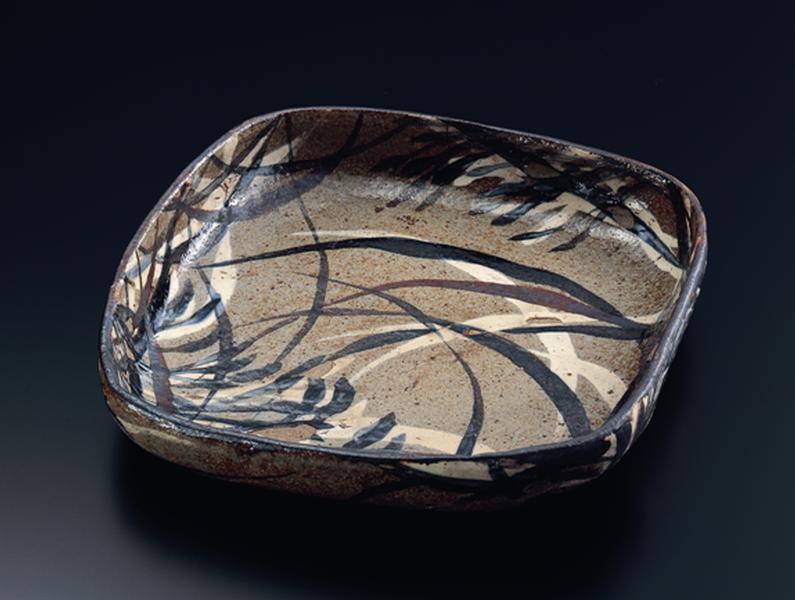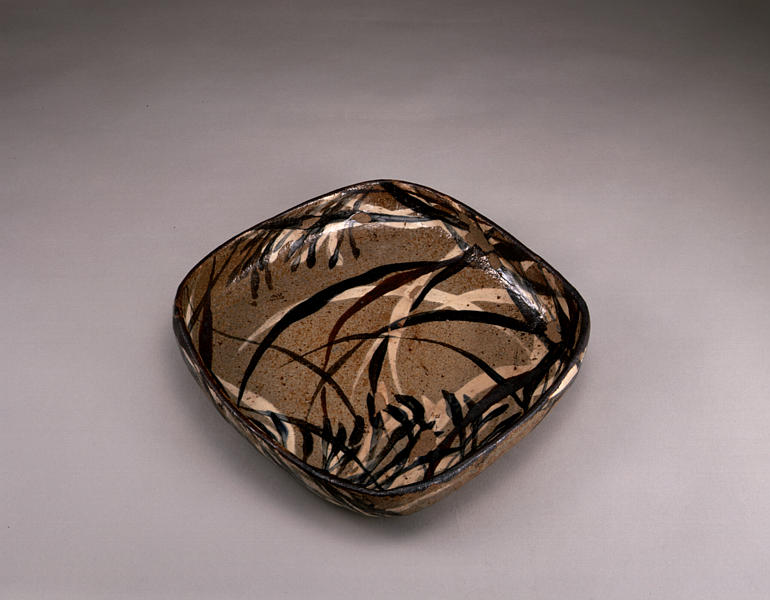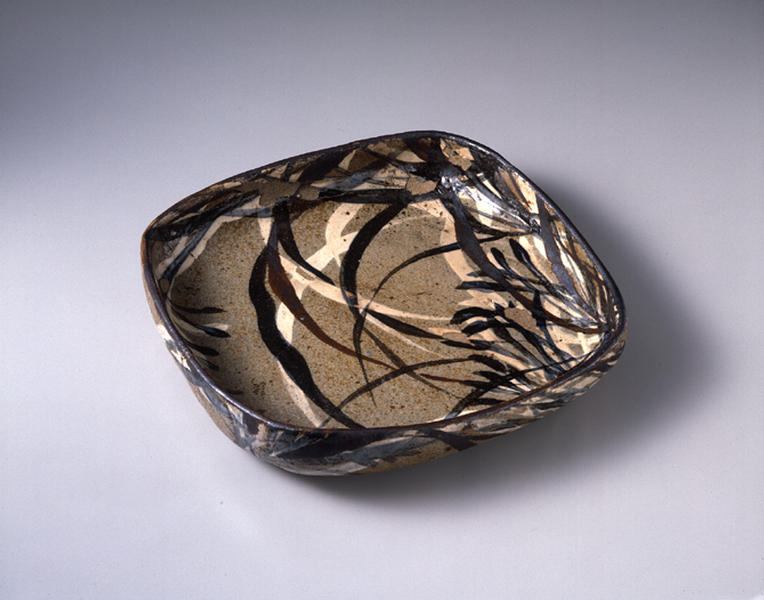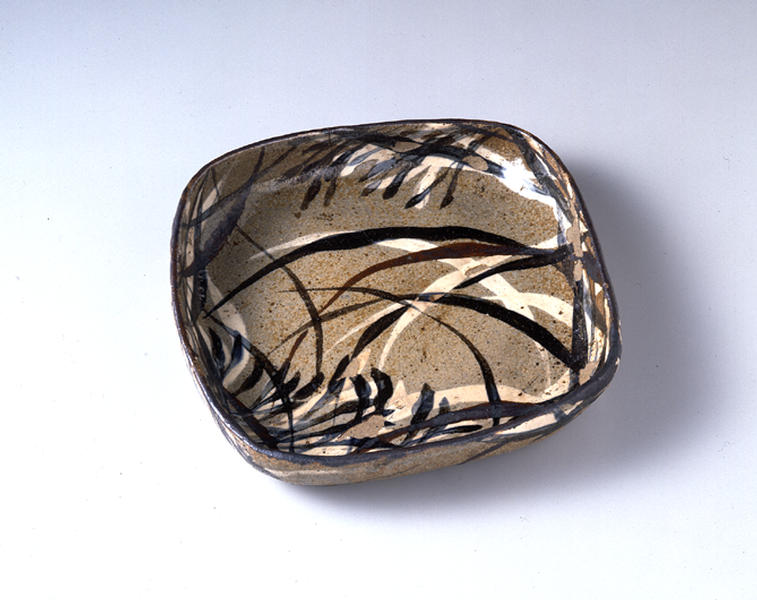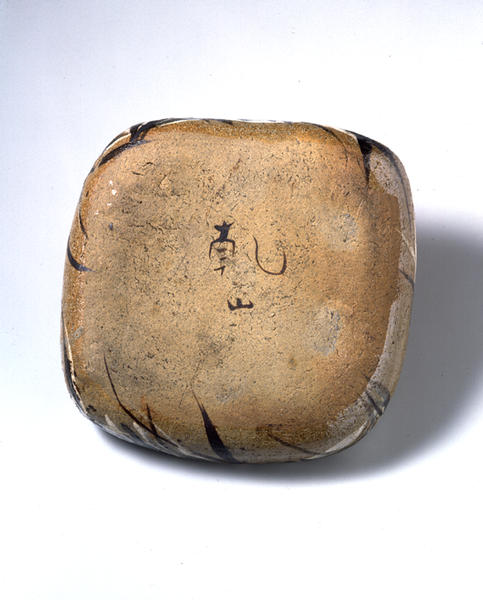Square Kenzan Bowl with Grass Design
- Narutaki, Kyoto
- Edo period
- 18th century
- Kenzan ware, underglaze iron and blue decoration
- H-5.2 D-25 W-25.2
Catalogue Entry
Ogata Kenzan, whose childhood name was Gonpei, was born in Kanbun 3 (1663) as the third son of Ogata Soken, a wealthy cloth merchant and proprietor of the store "Kariganeya" in Kyoto. Soken's second son became the brilliant painter, Ogata Korin. The Ogata family was related to the Honnami family by blood, and it is perhaps this lineage that endowed these two brothers with exceptional artistic talents. In contrast to Korin, Kenzan is said to have been introspective and reclusive.
After having inherited his father's estate, Kenzan at last set up a place where he could devote himself to art without disturbance at Omuro in Kyoto. Kenzan took advantage of living almost right next to Nonomura Ninsei and learned pottery from him. In Genroku 12 (1699), Kenzan built a kiln at Narutaki in the northwest of Kyoto. Since Kenzan was far from an accomplished ceramic artist, he enlisted help from Magobe, an expert in Oshikoji ware ceramics and from Ninsei's son Seiwemon, in the areas of forming, glazing, and firing of the pieces he produced. Kenzan's outstanding artistic talents were unleashed in the design of the overall shape and of decorative patterns.
To produce this square bowl, it was first coated it with white slip and then grass designs were drawn with iron underglaze and indigo-blue glaze. It was then finished with transparent glaze. The technique of production employed for this piece has something in common with another highly treasured piece known as Covered Square Box with Plum Blossom and Wave Motifs of the Miho Museum, in that the technique of producing this piece appears identical to that of the lid of the latter piece. The grass design may resemble a spring orchid rather than the Japanese pampas grass, yet suggests movement and life. The bottom of this piece is a small stand where a large signature of Kenzan is inscribed largely with an iron underglaze. Though a small area of glaze has flaked off on the inside, the condition of this piece is generally good. It is a splendid work that illustrates well the early style of Kenzan.
